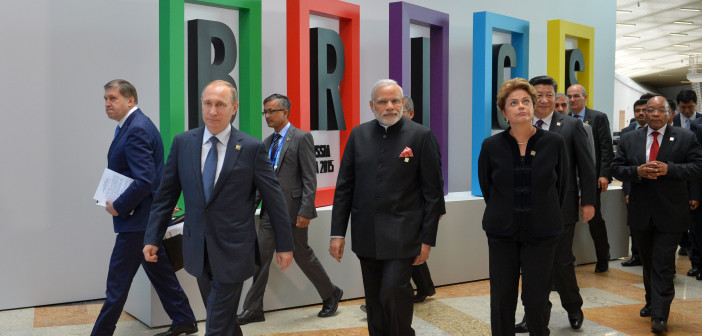
The long-discussed and planned international bank backed by the world’s top emerging economies is up and running. The New Development Bank launched this week in Shanghai, China. It is touted as a direct challenge to the older World Bank and International Monetary Fund. But its backers offer a more humble vision.
“The NDB will supplement the existing international financial system in a healthy way and explore innovations in governance models,” said Chinese Finance Minister Lou Jiwei at the opening ceremony of the bank.
The $100 billion lending machine is the product of the group of nations known as the BRICS – Brazil, Russia, India, China and South Africa. Leaders from the five countries met in Russia earlier this month to discuss relations with each other and firm up the new bank. The New Development Bank was launched before the meetings, but the event in Shanghai marked its actual start. Indian banker Kundapur Vaman Kamath was tapped to lead the bank that has $50 billion in contributions divided equally among the five countries. Kamath echoed Jiwei’s sentiments that the bank will support not supplant the current system.
“Our objective is not to challenge the existing system as it is but to improve and complement the system in our own way,” Kamath said.
The goal is to expand to $100 billion in capital within the next few years. It is less than half of the more than $220 billion in subscribed capital that funds the World Bank. China is also a significant contributor to the World Bank, paying in more than $12 billion (slightly more than it is giving to the NDB).
This marks the second major bank launched with the backing of China. The Asian Infrastructure Investment Development Bank (AIIB) was formed in April. It was met with mixed reactions within the United States and around the world. Like the New Development Bank, the infrastructure-focused bank is said to take aim at the old guard of development lending.
“The establishment of the BRICS New Development Bank, an emergency reserve fund, and the AIIB will break the monopoly position of the International Money Fund (IMF) and the World Bank (WB),” wrote Liu Zongyi, research fellow of Shanghai Institutes for International Studies, a state-run think tank in China, for Global Times. “It will motivate the IMF and the WB to function more normatively, democratically, and efficiently, in order to promote the reform of international financial system as well as democratisation of international relations.”
The infrastructure bank and the BRICS bank are said to enjoy a close relationship. Kamath said a “hotline” was set up between the two bodies to build better ties and discuss issues relating to the investments made by the banks. While there is no agreement on the size of impact on the old guard, the new banks are making plenty of waves in the sea of international development financing.
“The willingness of the BRICS to commit more resources to their new institutions than the existing ones suggests they are serious about changing the system. The U.S. and its allies are left guessing whether the BRICS countries might eventually stop funding the IMF and the World Bank,” wrote Leonid Bershidsky for Bloomberg last year.
A year later, the BRICS have formalized the banks. Yet, more questions linger with regards to their impact on international development.